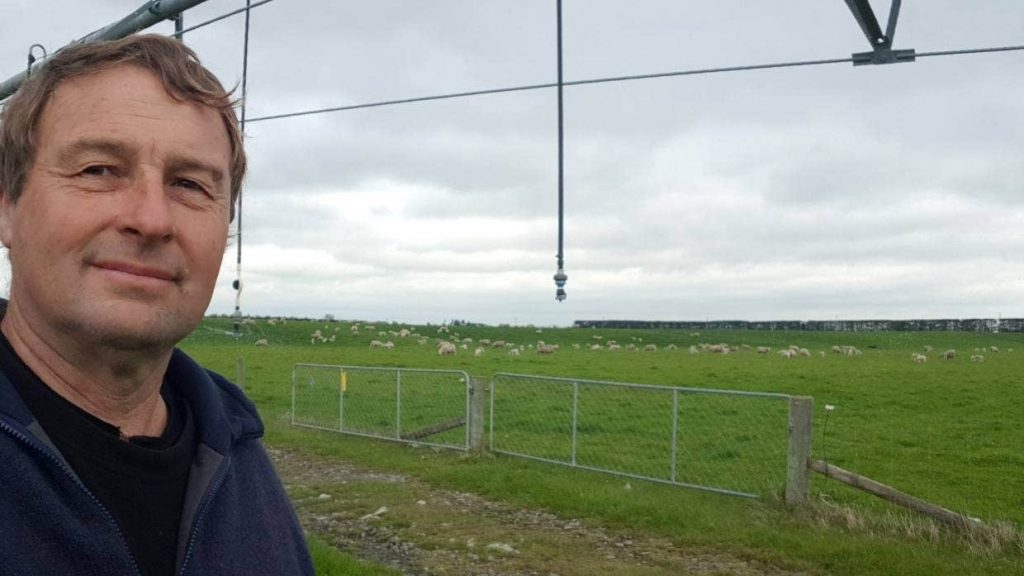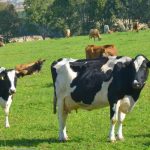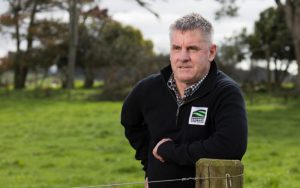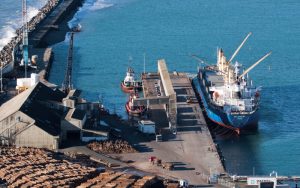
It was 1994 when Chris Allen quit his long-term job as an Air New Zealand engineer and headed to Ashburton Forks in Mid Canterbury to become, of all things, a farmer.
The farming climate he entered was fractured and bruised after the Labour government implemented tight monetary reforms to right an economy that had been bottomed out by former Prime Minister Rob Muldoon’s interventionist policies.
The result was that many farmers in Allen’s district had exited on the back of crippling interest rates, leaving behind land that was considered marginally economic. The Canterbury primary industry was on its knees.
For newbie Allen and those who remained, efficiency and productivity became the mantra for survival. Where once the Canterbury Plains had been partly a parched dust bowl with many dryland sheep and cropping farms, the land use began to change as new technologies provided irrigation with new operational efficiencies that made it easier to grow good pasture and crops at a faster rate.
Allen, like so many who followed, saw opportunity as he set about making his 360-hectare property a profitable sheep, beef and cropping enterprise.
Having grown up on a farm in the Waikato, he had to quickly grasp the unique eccentricities of Canterbury soils and learn how best to utilise the water use consents that came with the land that enabled him to take water from the Ashburton River.
Allen, who is also the water quality spokesperson for Federated Farmers, like most farmers in the Hinds’ catchment area, operated a border dyke irrigation system. It was considered state of the art when the schemes were built between 1945 and 1957, and revolutionary with the opportunities it opened up over the 62,500 hectares it covered in Mid Canterbury. It delivered water via a canal to levies in paddocks, designed to prevent water entering or leaving an area.
But by the mid 1990s it was clear that the dykes were a highly inefficient method of delivering water, leading farmers like Allen to begin looking at new spray irrigation systems that were already operating in the United States. Efficient on water use and able to be specifically directed, the spray irrigators heralded the most significant change in land use in the history of the Plains as dairy farmers from around New Zealand saw the productivity gains they could make.
Allen was no exception and gradually invested in the expensive infrastructure required, although unlike others in the area he did not need to use privately consented ground wells.
By the 2000s land prices were rising rapidly on the back of global dairy protein demand, low meat, wool and grain prices. Sensing a growth opportunity, dairy farmers were drilling ground wells at such an alarming rate that Environment Canterbury would later try to halt new consents as aquifers in some areas began to show signs of not refilling.
Growing Chinese-led demand meant in the 2001-02 season milk solid (MS) prices reached a record high of $5.30 per kilogram while a top-performing cow could make a farmer $2600 per year and this drove dairy farmers to intensify and double the amount a cow could produce.
Fertiliser and in particular nitrogen enabled farmers to stock at a far higher rate. Where the average had been around two cows per hectare, systems were now operating at 2.7 per hectare – a 40 per cent rise.
With dairy farmers accounting for 63 per cent of all nitrogen used in New Zealand, tonnages spread increased from 50,000 tonnes in 1991 to 350,000 in 2004-05.
But as New Zealand’s economy thrived on the back of the 3.5 per cent of GDP that dairy exports was providing, no-one was thinking about the long-term effects of intensification.
Allen remembers he only started hearing about water quality in the Ashburton district in the early 2000s.
“And I thought where the hell did that one come from because I wasn’t let to believe up until then that it was a problem. The scientists were saying we could use fertiliser to grow grasses, but they weren’t actually saying that on the leaky soils, we were building ourselves up to a problem. Perhaps it wasn’t on their radar yet?”
With 20 different soil types on his farm alone, Allen says understanding how they work is important when considering how nitrogen gets into groundwater. From heavy productive soils with clay underneath that allow deep roots to catch nutrients before they go through the soil profile to light, free-draining soil that acts like sand when wet, different areas require different management, which was a fact not well understood at the time of the dairy boom.
By 2002 rivers and lakes around New Zealand (including Lake Ellesmere) near intensive dairying areas were showing signs of heavy pollution and before long Fish and Game and environmental activists began a ‘dirty dairying’ campaign that focused on cows standing in rivers.
At the same time ECan was beginning to see some alarming nitrate levels in ground wells. In the Ashburton/Hinds area, data shows between 1991 and 2003 some wells went from having about 1.4mg of nitrate per litre to 4.3-6mg per litre. Coincidentally this was at a time when irrigators were moving from border dyke to spray systems. Some wells were showing levels over the WHO accepted level of 11.3 milligrams (mg)per litre, leading to the community and ECan working together to address the problem.
For Allen the ongoing commentary from activists who blame dairying and farmers for the pollution doesn’t ring true. He believes there remains a complex web of events and issues from central and regional governments that led to the problem and is proud of how the sector has been accountable and moved proactively to incorporate management systems and technology to reverse the trend.
“We are actively researching ways to restore our aquifers’ water balance to where they need to be.”
On farm, he and other farmers use a wide range of management techniques as science has become available, including multi pasture species soil mapping technology to precision farming technologies when applying water and fertilisers. That has meant he has been able to produce on average a 5 kilogram heavier lamb off the same volume of water he applied when he began farming in 1994.
“Farmers have embraced precision agriculture and all the technology that comes with it.”
So what is the problem?
From the earliest of times Kiwi farmers sowed clover in their pastures, knowing clover converted atmospheric nitrogen into a form that was essential to grow healthy plants, but they were limited by the finite amounts each clover plant could produce.
By the 1990s, and with a ready source of synthetic nitrogen available from universities and fertiliser companies at an economical cost, farmers were tuned in to the advice they were receiving from farm advisors and the Ministry of Agriculture and Fisheries, which urged them to increase the amounts they were spreading.
Growing grass faster with Urea (a fertiliser containing 46 per cent nitrogen) became the bible for scaling up production. Increased inputs meant increased yields, causing cow numbers to surge from 2.8 million (2.5 cows/ha) in 1995 to 3.9 million in 2005 (2.8 cows/ha).
Initially, however, a not widely understood problem was taking place every day within the porous soils on the Plains, with excess nitrogen from fertiliser and cow urine patches not all able to be taken up by plants, causing leakage of nitrates into the soil that accumulated over time.
According to the World Health Organisation, the current safe level for nitrates in drinking water is 11.3mg per litre of water but this has been contested in various studies, most recently, by a major Danish study published in 2018 that found a link between bowel cancer and nitrate levels, with a 15 per cent increase at 2.1mg per litre.
If the Danish study is proved a large chunk of the Canterbury Plains will have drinking water that is unsafe to drink. In the Hinds/Hekeao Plains area alone, ECan stepped in when nitrate levels were shown in some cases to be higher than what the Ministry of Health considers to be a safe standard. It has worked with the farming, environmental, and local community alongside iwi under the Canterbury Land and Water Regional Plan to reduce nitrate concentrations across the catchment to 6.9mg per litre and reduce nitrogen losses from farms by 45 per cent.
According to ECan, because of the time it takes for nitrate from previous farming practices to travel through our groundwater, the public will not see clear improvements in groundwater quality for at least another 15 to 20 years and in some cases the situation will get worse before it gets better.
Last year the Government announced a National Policy Statement for Freshwater Management policy that would effectively override any work ECan is doing with the farming community to reduce nitrates. Under the proposal some Canterbury farmers would be expected to reduce nitrogen losses by up to 80 per cent or more.
Government encouragement to intensify while ECan slept?
Even since the heady days of the 1960s, when a Federated Farmers president could telephone ahead to the prime minister and announce he was coming over for a cup of tea, governments of the day have often signalled the importance of the primary sector to the economy and championed increasing production.
Famously, in 2014 then-Primary Industries Minister Nathan Guy called for the primary sector to double the value of exports by 2025.
Today Labour points the finger at farmers and is demanding changes in farm management that could mean farmers may have to destock, yet Agriculture Minister Damien O’Connor signals it is farmers who will lift New Zealand out of the Covid-19 recession.
“Our farmers and growers are in a strong position to help us reboot our economy. Along with the sector, the Government is focused on creating more demand, pursuing greater market opportunities to generate higher export returns and growing rural communities with new jobs.”
It’s the mixed messages multiple governments have historically sent that perplex Allen.
“Central government had a big part to play in what happened in Canterbury because they weren’t managing the intensification. They were saying the restructuring of the economy was good. And who wants to live in a struggling community. Back in the nineties it was a very real rural problem.”
He believes Prime Minister Jacinda Ardern’s statement assuring New Zealanders they would not run out of food during the six-week Covid lockdown was significant.
“She was saying farmers are trusted. They’re producing your food, and we are a food producing nation.”
Former Agriculture Minister Sir Lockwood Smith says the removal of Muldoon-era subsidies from farmers, including supplementary minimum payments of up to 95 per cent of a sheep carcass, led to land use change.
As a minister in 1994-95, Smith says the focus was on improving productivity but issues that might stem from intensification had not yet surfaced.
“We were aware of countries overseas having soil issues, particularly in Europe. We were conscious but the level of intensity had not raised alarms and the use of things like Urea was so much lower. Stocking rates were significantly lower. The potential for these issues had not been fully recognised at that stage.”
For Allen, ECan has had the biggest role in helping to create the nitrate leaching issue.
“It couldn’t put a plan in place to manage the limits. It took 19 years to put the Land and Water Plan in place.”
ECan might have been late to the problem but the Canterbury Water Management Strategy and Canterbury Land and Water Regional Plan have started to address the problems caused by land-use intensification.
As part of that, water zone committees have developed actions and tactics to deliver on 10 targets within their water management strategy.
Some impacts of the new rules were only starting to take effect and there was much work to be done by farmers, industry and the council in coming years, they say.
What can be done?
Former Lincoln University agrifood systems professor Keith Woodford says educating key groups including farmers, research and development organisations, government and the public is important.
“And we need the involvement and commitment of all those groups to get the right outcomes.”
Woodford believes a key solution to nitrate leaching lies in getting cows off pasture for most of the winter and late autumn as that is when wet conditions mean more nitrogen is leached. Passionate about fixing the problem, Woodford has set up a business selling composting open barns he calls ‘moo-tels’. Farmers line the barns with a deep litter that allows effluent to mix with the bedding before turning into compost.
He says there is a group of farmers around the country driving nitrate leaching solutions like the composting barn forward.
“They are well ahead of the R and D organisations.”
South Canterbury regenerative farmer Bryan Clearwater, who has been farming organically at Peel Forest for 20 years, says he is heartened by the farming community’s “unprecedented” interest in regenerative agriculture – a conservation and rehabilitation approach to food and farming systems.
“It’s certainly predominantly the younger generation who are looking 40 years ahead at their production costs, viability and social acceptability of contributing to solutions rather than being part of a problem.”
The status quo is not sustainable, and farmers need to move on from “protecting their patch”, he says.
“Farmers know where the world is going, and they need to be on the right side of history.”
Allen agrees and says everyone wants to leave the land better than they found it.
“As farmers we used to look at soils, trees, buildings and fences. Now we look up to climate impacts and down to water quality. It’s a big change, but we are taking it one step at a time.”

























